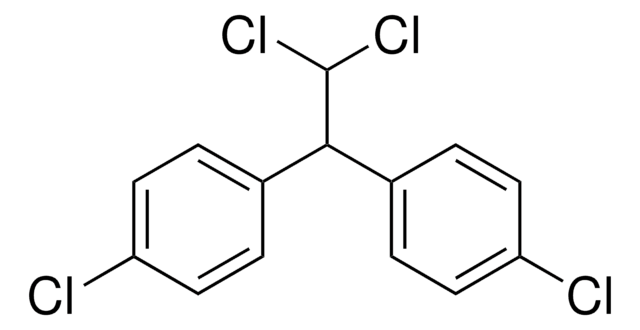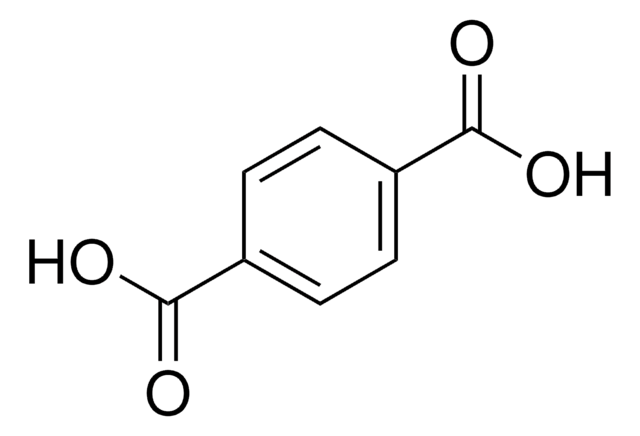123897
1,1-Dichloro-2,2-bis(4-chlorophenyl)ethene
99%
Sinonimo/i:
4,4′-DDE
About This Item
Prodotti consigliati
Saggio
99%
Forma fisica
solid
Punto di fusione
88-90 °C (lit.)
Solubilità
ethanol: soluble
Gruppo funzionale
chloro
Stringa SMILE
Clc1ccc(cc1)\C(=C(/Cl)Cl)c2ccc(Cl)cc2
InChI
1S/C14H8Cl4/c15-11-5-1-9(2-6-11)13(14(17)18)10-3-7-12(16)8-4-10/h1-8H
UCNVFOCBFJOQAL-UHFFFAOYSA-N
Informazioni sul gene
mouse ... Esr1(13982)
rat ... Ar(24208)
Cerchi prodotti simili? Visita Guida al confronto tra prodotti
Applicazioni
Avvertenze
Danger
Indicazioni di pericolo
Consigli di prudenza
Classi di pericolo
Acute Tox. 3 Oral - Aquatic Acute 1 - Aquatic Chronic 1 - Carc. 2 - STOT RE 1 Oral
Codice della classe di stoccaggio
6.1C - Combustible acute toxic Cat.3 / toxic compounds or compounds which causing chronic effects
Classe di pericolosità dell'acqua (WGK)
WGK 3
Punto d’infiammabilità (°F)
Not applicable
Punto d’infiammabilità (°C)
Not applicable
Dispositivi di protezione individuale
Eyeshields, Gloves, type P3 (EN 143) respirator cartridges
Scegli una delle versioni più recenti:
Possiedi già questo prodotto?
I documenti relativi ai prodotti acquistati recentemente sono disponibili nell’Archivio dei documenti.
Il team dei nostri ricercatori vanta grande esperienza in tutte le aree della ricerca quali Life Science, scienza dei materiali, sintesi chimica, cromatografia, discipline analitiche, ecc..
Contatta l'Assistenza Tecnica.











